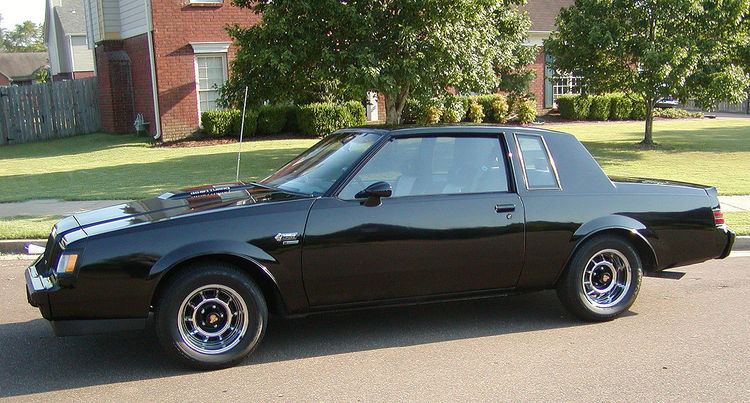Manufacturer General Motors Class Mid-size | Production 1978–1988 Predecessor GM A platform (RWD) | |
 | ||
Body style(s) 4-door sedan
2-door coupe
4-door station wagon
2-door coupé utility pickup Successor GM A platform (FWD)
GM W platform
GM H platform (FWD) | ||
The General Motors G platform (also called G-body) was an automobile platform designation used for mid-sized rear wheel drive cars. It made its first appearance in 1969-1972, adapted from GM's A-body, and reappeared from 1982 to 1988. The second series of G-bodies began production designated as A-body cars in 1978, but were redesignated as G-body when the new front wheel drive A-body platform was introduced in 1982.
Contents
Use
The G-body designation was originally used for 1969–1972 Pontiac Grand Prix and 1970–1972 Chevrolet Monte Carlo personal luxury cars.
Between 1973 and 1981 the A-body coupes with formal rooflines were designated as A-Special and after 1982 dubbed as the G-Special. These special coupes included Monte Carlo, Grand Prix, Oldsmobile Cutlass Supreme and Buick Regal two door models. The 1978 model year being the changeover year between the larger 73-77 body style and the reborn A/G platform. The Cutlass Supreme chassis being named an A body until GM changed the name into the official G body platform even though they were near identical, in 1981.
At some point in the platform's lifetime, the term "G-Body Shuffle" became popular in the drag racing community (where the cars were often modified for racing) for the vehicle's side-to-side motion of the rear end after taking off from the starting line. This was due to the car's triangulated four-link rear end suspension, which caused uneven torque to the rear wheels under strenuous driving.
In 1982, the Chevy Malibu/Pontiac LeMans coupes were dropped along with the Buick/Olds fastbacks. 1983 was the last year for wagons and Chevy Malibu sedans, leaving the G-Special coupes, B-O-P formal-roof sedans and the Chevy El Camino/GMC Caballero. In 1988, most remaining G-body models were moved to the new front wheel drive GM W platform, although the Pontiac Bonneville moved to the H-body, the El Camino was dropped without replacement and there would be a one-year gap before the W-body Chevy Lumina coupe truly replaced the Monte Carlo. GM later used the GM G platform (FWD) designation for unrelated full-sized cars.
G-bodies were some of the last cars to follow the classic front engine big V8/rear wheel drive muscle car formula, remaining popular while most mid-sized cars moved to front wheel drive, modest V8s, and V6s. They were also among the last truly production-based vehicles raced in NASCAR (and quite competitively at that, with the Buick Regal in particular dominating many races in its time). NASCAR regulations continued to stipulate production body parts until 2003 (namely, the hood, roof, and deck lid), but since most of the vehicles that bodies were derived from during this period had transverse front wheel drive (many even lacking a V8 as an option), the drivetrain and all running gear were either custom or sourced from other (usually, older) models.
Vehicles
This family consisted of:
Performance vehicles
Performance applications include:
